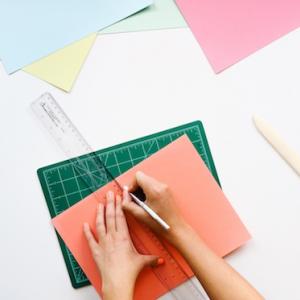Best Practices for Printing Brochures

As much as you try to avoid it, there will come a time in your personal or professional life when you will be forced by circumstances to design, print, and distribute an item whose apparent simplicity belies its outsized frustration level: The brochure.
For purposes of this article, a “brochure” is a document, printed on both sides of one sheet of paper and folded in one of several possible configurations, for informational or advertising purposes. It seems so simple—it’s just one sheet of paper, after all—but the design choices that go into creating an effective brochure will drive you batty if you aren’t prepared.
To that end, here are some best practices to keep in mind when creating and printing brochures:
- Know your audience and purpose: It should go without saying, but the success of a brochure lies not in how fancy it is but in how well it conveys its message to its intended audience. Look around—an astounding number of four-color glossy brochures fail to provide any useful information. Get the content right, and get feedback from a sample of your audience. Then worry about presentation. Which brings us to…
- Know your budget: This will drive how fancy you can get with the presentation. Printing in color, using fancy paper or nontraditional media, incorporating cutouts and embossing…all of these nice features add to the cost. You should consider your audience here too: A brochure about your public library’s book club probably doesn’t need to be as fancy as one about your resort in Maui.
- Use the right design tool: For something simple, with text and few graphics, most word processors will suffice, although you might need to delve into page layout options you aren’t familiar with. For anything fancier, you should use a real page layout tool, such as Adobe InDesign or Microsoft Publisher.
- Generate the right output: For simple brochures, a word processing file or PDF will work fine, whether you are printing it yourself, taking it to your neighborhood copy center, or sending it to a professional printer. For fancier brochures, especially with multiple colors, you may need to provide different types of files—find out what your professional printing service requires.
- Use the right printer: If you don’t mind folding brochures manually, printing them on your home or office printer is an option, especially if you have access to a duplex printer. (Otherwise you have to run the paper through the printer twice, and inevitably you will print the second side upside-down or backwards, or run into paper jams.) For better results, and to avoid exhausting your ink or toner, a self-serve copier at the copy center will do. For large format printing and anything fancy, you should enlist the aid of a professional printing service.
And finally: Do multiple final checks before you print. Preferably, get someone else to check it, someone who has strong attention to detail. “Fact check” everything: Are the dates right? All the names spelled correctly? Phone numbers and email addresses? These are the types of little things that have a maddening habit of not being obvious until you’ve printed 1,000 copies.
You probably will go through many drafts to get your brochure just right, so plan for this project to take longer than you think it ought to. By keeping these tips in mind, you should have a much easier time of it. Good luck!
